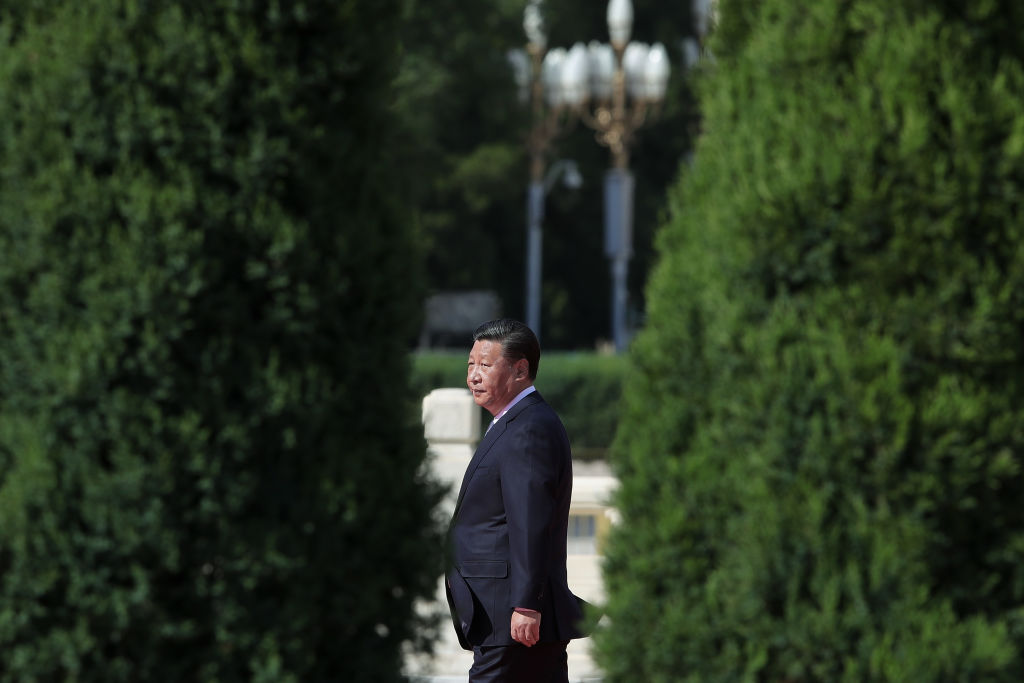Tough sell: Baijiu, China's potent tipple, looks abroad
image: data:image/gif;base64,R0lGODlhAQABAAAAACH5BAEKAAEALAAAAAABAAEAAAICTAEAOw==
Ranging from around 35 to 55 percent alcohol, baijiu packs a searing, sickly-sweet punch, an intensity that evolved to match the powerfully spicy cuisine of southwestern China, the spirit's heartland AFP/HECTOR RETAMAL
17 Jun 2019 12:40PM
Share this content
Bookmark
LUZHOU: It may be China's national spirit, but for London bartender Ellie Veale it's clear from the first swig why baijiu has not caught on overseas.
After some initial fruity notes, Veale crinkles her noise as the crystal-clear booze reveals its intense, earthy essence.
"I worked on a cattle farm in Australia and this kind of aftertaste reminds me of the smell of ... cow manure, hay, and horses," she says, in the London bar Demon, Wise & Partners.
"It's not the beverage for me," she concedes.
And yet baijiu's popularity in China has propelled demand - making it the most consumed spirit in the world, and its major producers the most valuable distilleries globally.
"Baijiu belongs to China, but also the world," says Su Wanghui, information director at Luzhou Laojiao, one of the country's biggest and oldest brands.
Advertisement
"We hope to have people around the world try baijiu, and like baijiu," she adds.
image:
https://www.channelnewsasia.com/ima...-wine-and-spirit-research-1560745736299-2.jpg
Around 10.8 billion litres of baijiu (2.9 billion gallons) was consumed last year, nearly all in China, according to International Wine and Spirit Research AFP/HECTOR RETAMAL
There's just one problem: The taste.
Kinder critics say it evokes truffles or burning plastic, while less generous descriptions have included "industrial cleaning solvent" and "liquid razor blades".
Ranging from around 35 to 55 per cent alcohol, baijiu packs a searing, sickly sweet punch, an intensity that evolved to match the powerfully spicy cuisine of southwestern China, baijiu's heartland.
Many foreigners in China relate horror stories of being bombarded by baijiu toasts at banquets.
"The foreign view of baijiu is: Very spicy, like a rocket blasting to heaven," Su told AFP at Luzhou Laojiao's headquarters on the upper Yangtze in rugged Sichuan province.
ROCKET FUEL
Most Chinese people cannot imagine major celebrations without it, particularly the Chinese New Year holiday, when excessive toasting leaves revellers staggering toward brutal hangovers.
Around 10.8 billion litres of baijiu was consumed last year, nearly all in China, according to International Wine and Spirit Research.
That's more than whisky, vodka, gin, rum and tequila combined and would take an hour to slosh over Niagara Falls according to WorldBaijiuDay.com.
But baijiu has been on a roller-coaster in recent years.
A government corruption crackdown launched in 2012 hit hard: Premium brands had become the go-to gift for bribing Communist officials.
Sales fell off a "cliff", Su says.
And many younger Chinese, exposed to French wine and German beer, shun a rotgut they equate with rural regions and drunken businessmen.
Forced to adapt, manufacturers have found success with milder new varieties and brightly packaged single-serving mixed drinks.
Sales have recovered, igniting share prices.
image:
https://www.channelnewsasia.com/ima...he-lunar-new-year-holiday-1560745736299-4.jpg
Most Chinese people cannot imagine major celebrations without baijiu, particularly the Lunar New Year holiday AFP/HECTOR RETAMAL
In 2017 the market value of Shanghai-listed Kweichow Moutai surged past London-based Diageo, maker of Johnnie Walker whiskey and Smirnoff vodka, to become the world's most valuable distiller.
Now around 900 yuan (US$130) per share, it could become China's first 1,000-yuan stock.
Emboldened distilleries are now looking abroad, staging tastings and developing smoother, export-oriented brands, while touting centuries-old artisanal production methods.
At Luzhou Laojiao, sorghum is fermented for months in deep microbe-rich earthen pits, some in continuous use since 1573.
Staff, resembling Shaolin monks in bright yellow and red outfits and performing all work by hand, distill the fermented mash in steaming-belching wooden pot stills. The end-product is then aged, sometimes for decades, in giant clay pots in nearby caves.
CHALLENGE FOR CUSTOMERS
Water, soil, climate and other factors make baijiu from different regions as "different from each other as a whiskey is to a mescal," said Bill Isler, CEO of Ming River, an export-only brand created by Luzhou Laojiao.
But he says there is a "lot of prejudice" to overcome, before baijiu can follow once-obscure "local" spirits such as vodka and tequila and go global.
A wave of "baijiu bars" opened in China, the US, and Europe in recent years as a buzz swelled. But many have since closed.
"It's a challenge for the customers. It hasn't really caught on in the West yet," said Demon, Wise & Partners owner Paul Mathew.
The price of top brands is one hurdle. Mathew charges £12 (US$15) for a glass of Kweichow Moutai.
"It is also a very unfamiliar flavour for guests, so we need to tell them the story, how baijiu is made, why it has the characteristics it has, before it becomes more accessible," he said.
Jim Boyce, a Beijing blogger on China's booze scene who launched annual the Aug 9 "World Baijiu Day" in 2015 to raise awareness, said baijiu is hampered by how it's consumed in China: straight up, with food.
"The fact is, people, at least in North America and Europe, don't drink lukewarm straight 52 per cent alcohol, so the people promoting this tend to be really into traditional baijiu culture," he said.
image:
https://www.channelnewsasia.com/ima...sumed-spirit-in-the-world-1560745736299-3.jpg
China's baijiu is the most consumed spirit in the world AFP/HECTOR RETAMAL
Boyce advocates creative cocktails or novelties like baijiu ice cream, suggestions that provoke blank stares from Chinese baijiu executives seeking his advice.
"It's been frustrating, frankly," he adds.
Overseas sales are growing, however. Kweichou Moutai earned 2.89 billion yuan (US$418 million) abroad last year, up 27 per cent year-on-year. But that's a drop in the bucket of its 73.6 billion yuan overall revenue.
"We're trying our best to make the world understand, to spread the word about baijiu, just like whiskey and red wine are now known within China," Su said.
"But there is still a long road ahead."
Source: AFP
Read more at
https://www.channelnewsasia.com/news/asia/baijiu-china-alcohol-spirit-overseas-markets-11633706












![[Photos] This Is What Scientists Found At The Bottom Of The Niagara Falls That Left Them So Disturbed [Photos] This Is What Scientists Found At The Bottom Of The Niagara Falls That Left Them So Disturbed](https://images.outbrainimg.com/transform/v3/eyJpdSI6ImFhMzA1NjMyNWNlNThiNDYxODQ4M2NhNzIzNDgzMjliMjRjNDc2MGFmOTUzNmY4YTU1YWM4YmY4YjFkNTY5Y2YiLCJ3IjozMTUsImgiOjIyMCwiZCI6MS41LCJjcyI6MCwiZiI6NH0.webp)
